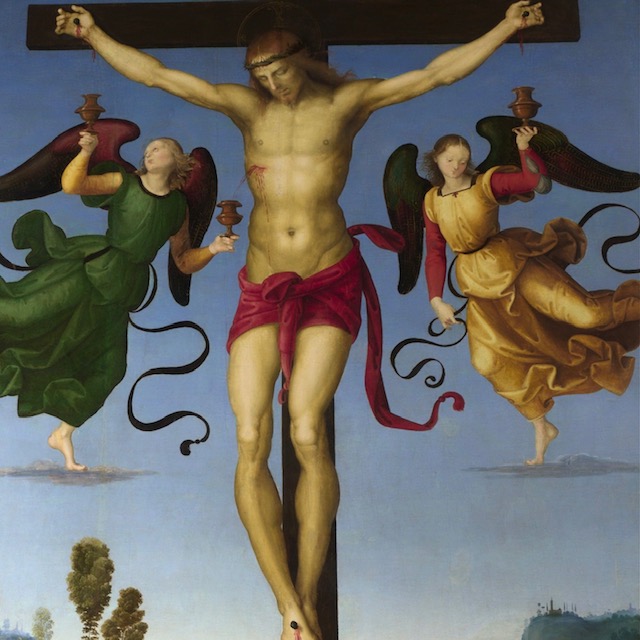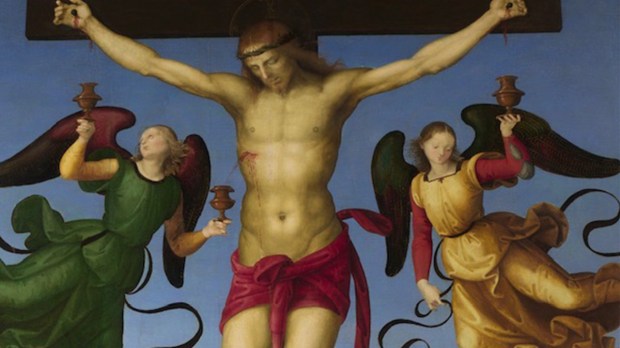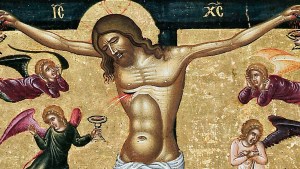We should be grateful when a painting of the crucifixion appears in an art documentary. It’s a rare happening these days, especially when the theme of the BBC’s latest show is “Nature and Us: A History through Art.”
Much as I admire the scholarly presenter, Dr. James Fox, he makes one dubious statement about Raphael’s 1502 masterpiece in the National Gallery, London. He says, “… Christ, as he bleeds to death on the cross.” Jesus and the countless other victims of crucifixion do not die from loss of blood. The ancient Romans wouldn’t want to make death so easy.
In reality the intention of this form of capital punishment was to prolong the public spectacle. There are many theories on the precise cause of Christ’s death. For victims of crucifixion it is usually asphyxiation. In the case of Our Lord, it is possible that his heart was fatally weakened by the appalling abuse and dehydration that began even before he was nailed to the cross. The reason for the centurion Longinus piercing his side with a spear was to check whether Our Lord – and eventually his lord, too – had died. It was a classic Roman test. The presence of blood and water confirmed death.
With the emphasis that many artists have put on angels catching cupfuls of Christ’s blood, it’s understandable that a historian as eminent as Dr. Fox might come to the wrong conclusion. Raphael probably knew better as he was less generous with the red paint than many artists.

The virtual Museum of the Cross
The Museum of the Cross is the first institution dedicated to the diversity of the most powerful and far-reaching symbol in history. After 10 years of preparation, the museum was almost ready to open; then came COVID-19. In the meantime, the virtual museum has started an Instagram account to engage with Aleteia readers and the stories of their own crucifixes: @crossXmuseum


